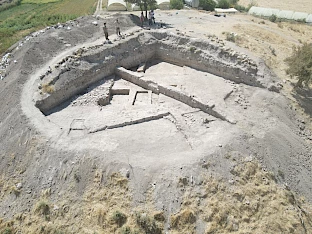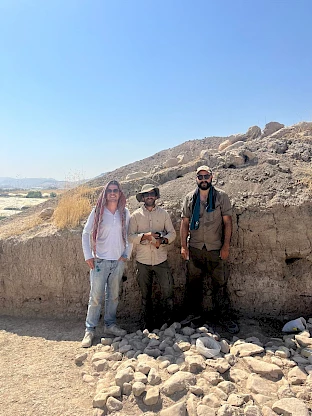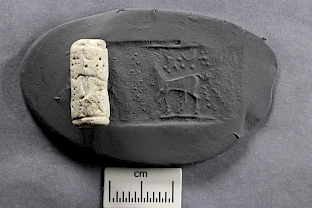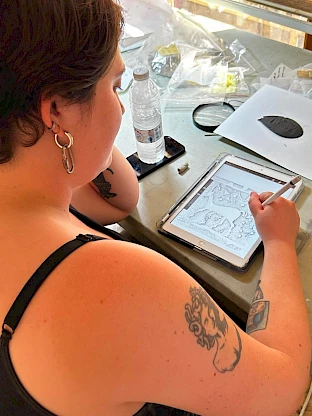University of Coimbra researchers return from Iraq with new unpublished archaeological finds
The excavation campaign, conducted between 24 August and 27 September as part of the Kani Shaie Archaeological Project, added new insights into the history of the first communities to inhabit this region.
A team from the Research Centre in Archaeology, Arts and Heritage Sciences (CEAACP) of the University of Coimbra (UC) has recently returned to Portugal from another mission in Iraqi Kurdistan, with unpublished data on the Early Bronze Age in Mesopotamia. The research provides new insights into the history of the first communities to inhabit this region 5,000 years ago.
The excavation campaign was conducted between 24 August and 27 September as part of the Kani Shaie Archaeological Project (KSAP), a collaboration between CEAACP and the University of Cambridge, led by Maria da Conceição Lopes, a professor at the Faculty of Arts and Humanities of the University of Coimbra, CEAACP researcher André Tomé, and Steve Renette, a researcher at the University of Cambridge.
“We now know that there was once a large circular building at Kani Shaie, but only a small part has been uncovered. However, we can see that it was used to store grain and legumes and that it had several combustion structures, suggesting that it was also used for food preparation," the researchers say.
Strategically located at the foot of the Zagros Mountains, Kani Shaie would have served as an important crossing point for millennia on the routes connecting the Mesopotamian plain to the highlands, which later became part of the historic Silk Road.
The excavations uncovered new additional seal impressions, including ‘two cylindrical seals—rare artefacts used as stamps to seal ceramic containers and doors by rolling them over a damp clay surface’, explain Maria da Conceição Lopes, André Tomé, and Steve Renette.
They further add, "One of these 5,000-year-old seals challenges the traditional view of the end of the fourth millennium BC and suggests that at least in this region of Mesopotamia, the social and political structures that flourished with the invention of writing were maintained, contradicting the theory of a civilisational collapse."
In another excavation site, the team discovered a “complex building dating from the period between the fall of the Neo-Assyrian Empire and the reign of Alexander the Great.”
In addition to all this unprecedented information, the mission is already paving the way for future fieldwork at Kani Shaie: “The identification of a Neo-Assyrian seal on faience (a fine earthenware made of enamelled or glazed clay) in this area indicates the presence of significant layers yet to be explored, promising substantial discoveries in the next excavation campaign, which is already scheduled for 2025,” the coordinators said.
Laboratory work on the data collected will also allow the team to learn more about the communities which inhabited the region and how they continued to live there through the various periods of occupation.
"Despite the political and military turmoil in the region, our team intends to continue to uncover the stories of this site and region that can help us answer some of the questions we ask when considering the construction of the world we live in and the societies that shape it," they say.
This mission of the Kani Shaie Archaeological Project also involved Kurdish archaeologists, local authorities, and experts from various universities. The Portuguese team included other researchers from the Centre for Studies in Archaeology, Arts and Heritage at the University of Coimbra: Michael Lewis (deputy director), Tiago Costa, Anna Ligia Vitale and Humberto Veríssimo.
The project has mainly national funding from the Portuguese Foundation for Science and Technology (FCT).






